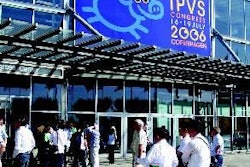
Visit restaurants, hospitals or schools in the United States and you will find signs in their restroom areas referring to strict hygiene protocols. For example, a sign will state that all employees must wash their hands before returning to work. With increased awareness of biosecurity in the swine industry, there is still room for improved hygiene along similar lines, especially in the farrowing barn.
The hand can be the means by which many disease agents are transmitted directly. A myriad of illnesses can be caused by these agents, including diarrhoea and pneumonia. Human medicine sees many examples. Often these involve someone whose failure to wash hands before eating has made that person ill or has passed an infection to other people. When the intensive care unit of an Italian hospital suffered an outbreak of vancomycin-resistant Enterococcus it controlled the infection by implementing a strict regimen of improved hygiene, in which a new unit was opened with improved structural design and hand-washing facilities.
While processing baby pigs, how many times do employees wash their hands? There must be a real risk of disease transmission whenever they pick up scouring piglets and immediately afterwards continue to place their hands into the mouths of other pigs to clip teeth, or notch ears, castrate and dock tails. Equally, there is a strong likelihood that the morbidity and mortality rates in the farrowing and nursery barns as well as daily weight gains could be improved by better hygiene practices.
Various options appear to be possible for sow-herd managers to consider in this direction. First, they could make sure there was somewhere available for the washing of hands, by installing a hand-basin inside the farrowing room. Larger herds might prefer to site the basins between rooms. But it may be impractical to instruct the workers that they must stop what they are doing after handling either one pig or one litter, in order to walk to the basin and wash their hands with warm water and an appropriate scrub. This is likely to become quite tedious and time-consuming for the staff, leading to poor compliance.
A more practical alternative would avoid the problem of downtime and decreased labour efficiency. Either instead of the basin or (even better) in addition to it, think about supplying an alcohol-based antibacterial solution that workers can rub on their hands to keep them clean. A dispenser for the solution is easy to install on the wall of the farrowing room, but would still necessitate continual breaks in the work while the attendant moved away from the pen in order to reach it after handling each pig or litter. For less hassle, try mounting the dispenser on the mobile cart or caddy used in piglet processing so the hand rub is easily accessible.
Compared with washing hands repeatedly, hand rubs also eliminate the need for drying, thus saving paper, time and another chance of contamination. A report published this year in a medical journal analysed the costs of hand hygiene using antimicrobial soap and water versus an alcohol-based hand rub. It found that the rub was more cost-effective and less time-consuming than traditional hand washing. In a separate study of hospital nurses, hand rubbing with alcohol-based antibacterial solutions was significantly better than hand washing alone at reducing the spread of bacteria. The only nurses who did not comply more with the requirement for hand rubbing than for hand washing were those who had over 3 years of experience in nursing.
Similarly in the farrowing room, a higher compliance of workers to use alcohol rubs should be observed, always assuming that the dispenser is placed accessibly on a cart or nearby walls. The lesson we can learn from the story about the more experienced nurses is that old habits die hard, so seasoned employees will require more incentive to improve their willingness to comply.
Better pig health and performance should be enough on their own to justify the cost of providing facilities for cleaning hands in farrowing barns. However, further justification may come if the improved level of hygiene also decreases the number of sick days taken by employees. The theory argues that enhanced hygiene reduces the bugs to which the workers are exposed and therefore they are less likely to become ill so they will miss less work. An American study done on alcohol-free instant hand sanitisers showed a significant reduction in elementary school absenteeism. Compared to hand washing alone, the hand sanitisers showed a significant drop in days missed by the students.
Even if you see the provision of hand rubs as your preferred course of action, keep in mind that hand washing is still required to remove debris. With or without hand rubbing, the sanitary conditions around the basin for this washing process will remain important. Encourage the staff to prevent recontaminating their hands after washing such as by using a paper towel to turn off the water or disinfecting the tap handle. Warn them, too, about the risk of splashing some contaminated water onto their clothes. Soap in a bar form must be placed on a drainable rack, because slime will build up in which bacteria can survivethis is true whether or not the bar was of antibacterial soap. Liquid soap probably is made available in a bottle. Ensure that this is cleaned thoroughly before being re-filled or simply replace it.
Moreover, do not use the hottest water for the washing of hands. Hot water leads to skin irritation and will increase the penetration of irritating detergent. Finally, with frequent washings, hands will become dry and cracked causing further sanitary issues. Supply a hand moisturiser to avoid this issue.
Which cleanser to use raises other considerations. The hand-washing agent must combat bacteria, fungi (including yeasts) and viruses (including those that have a protective coating). A comparison of using 4% chlorhexidine gluconate, 7.5% povidone iodine and liquid soap came to the conclusion that chlorhexidine scrubs could be used as a reliable antiseptic agent. Chlorhexidine (2-4%) has good activity against most bacteria, yeasts and enveloped viruses. However, it does have the potential to cause antibiotic resistance. It affects both bacteria that have arrived recently on the skin and the bacteria that have been on the skin for an extended period of time. Skin tolerance is less with chlorhexidine, even possibly causing an anaphylactic reaction. Plain soap by contrast has basically no antimicrobial activity. Although it reduces the recently arrived bacteria it will not affect those already residing on the skin. Also, skin tolerance to the detergent is rather poor. Alcohol-based hand rubs have good activity against all the organisms and little potential for causing resistance while the skin tolerance to the agent is rated as good.
But perhaps neither hand washing nor hand rubbing sound good to you, for whatever reason. In that case try requiring your employees to wear latex gloves while they process baby pigs. A new pair of gloves should be used for each litter. This may or may not lead to better compliance, but it is clearly a less-cost possibility. You do need to be aware that wearing gloves is not 100% effective in preventing microbes from getting on hands. In a human study, a specific bacteria was detected on the gloves worn by 17 out of 44 workers, while the infection was still present on the hands of 5 of the 44 workers who had worn gloves. Also, beware that some people develop an allergy to contact with latex, so latex-free gloves may need to be supplied.
Training and education cannot be overlooked if the hand hygiene regimen is to be successful. As mentioned earlier, not everyone will do as they are told, so it is important to educate workers on why they need to improve farrowing room sanitation and the proper method for doing so. Just telling them a hand-basin has been provided that they must use will not produce the results you are expecting. Explain the spread of diseases, referring especially to those infections at your herd or threatening to enter, and the importance of improved hygiene in controlling them. It may also be helpful to perform individual evaluations of hygienic practices to assure that they are following recommendations. The time and effort will be repaid by better disease control and improved pig performance because of the enhanced hygiene.















